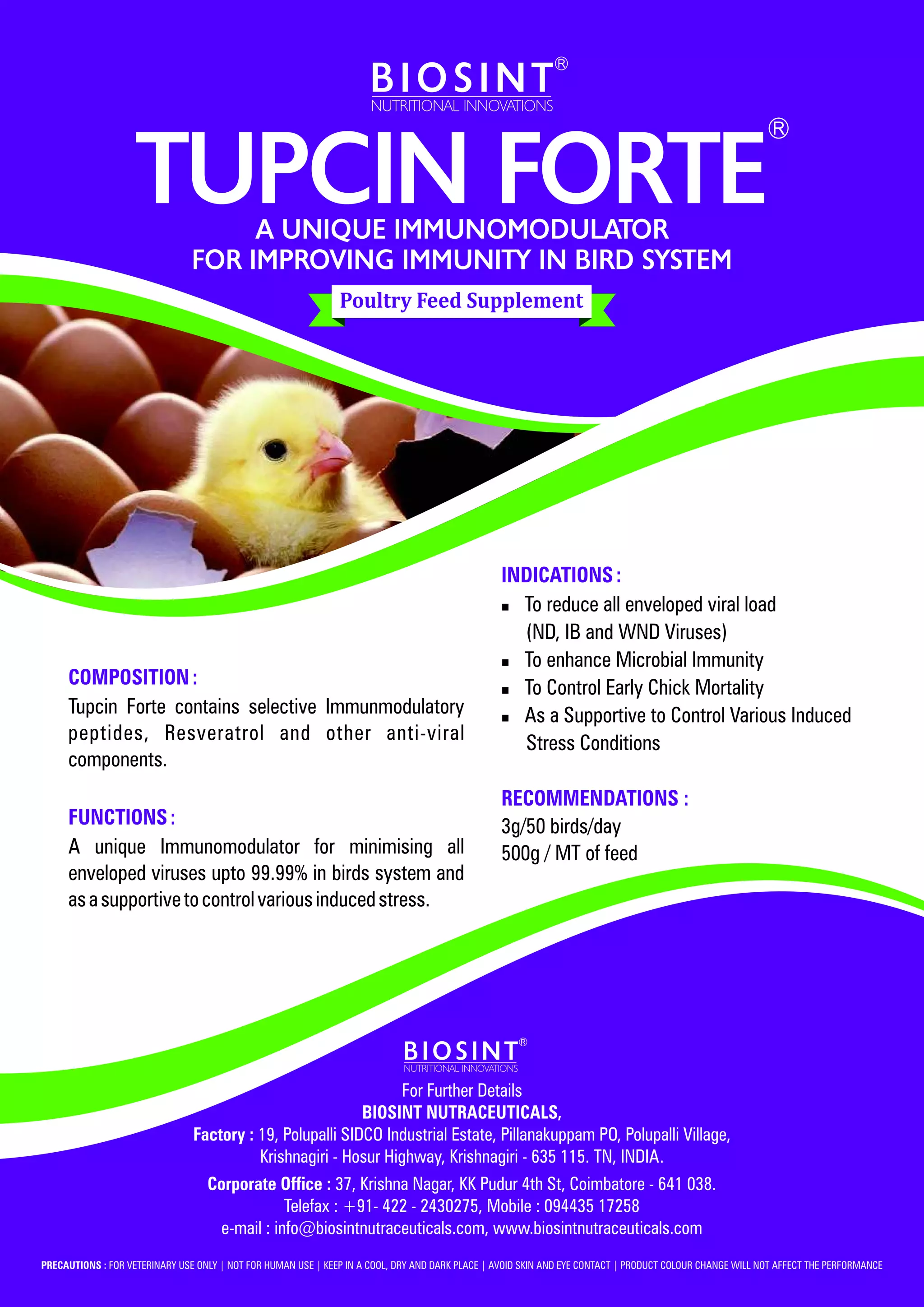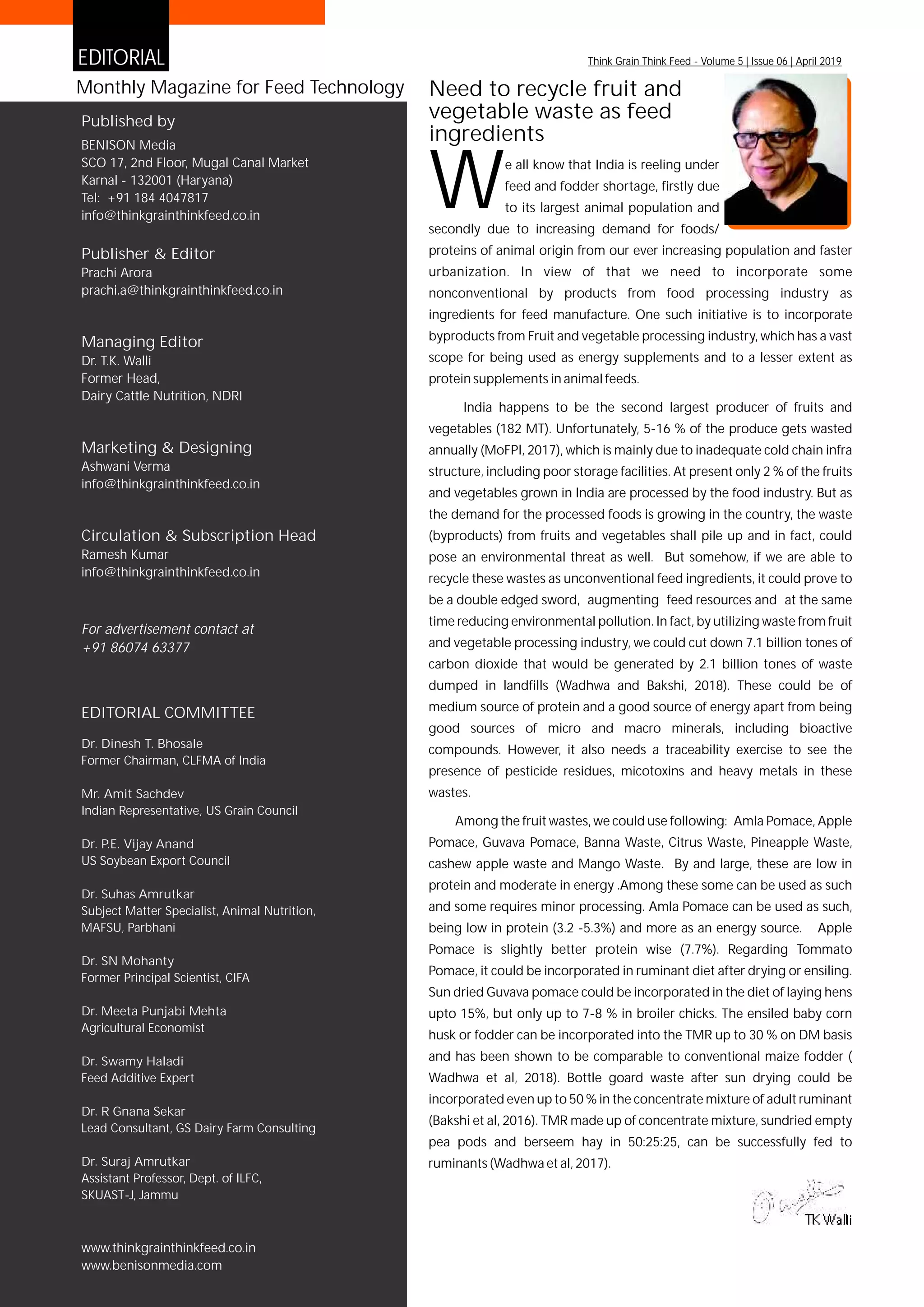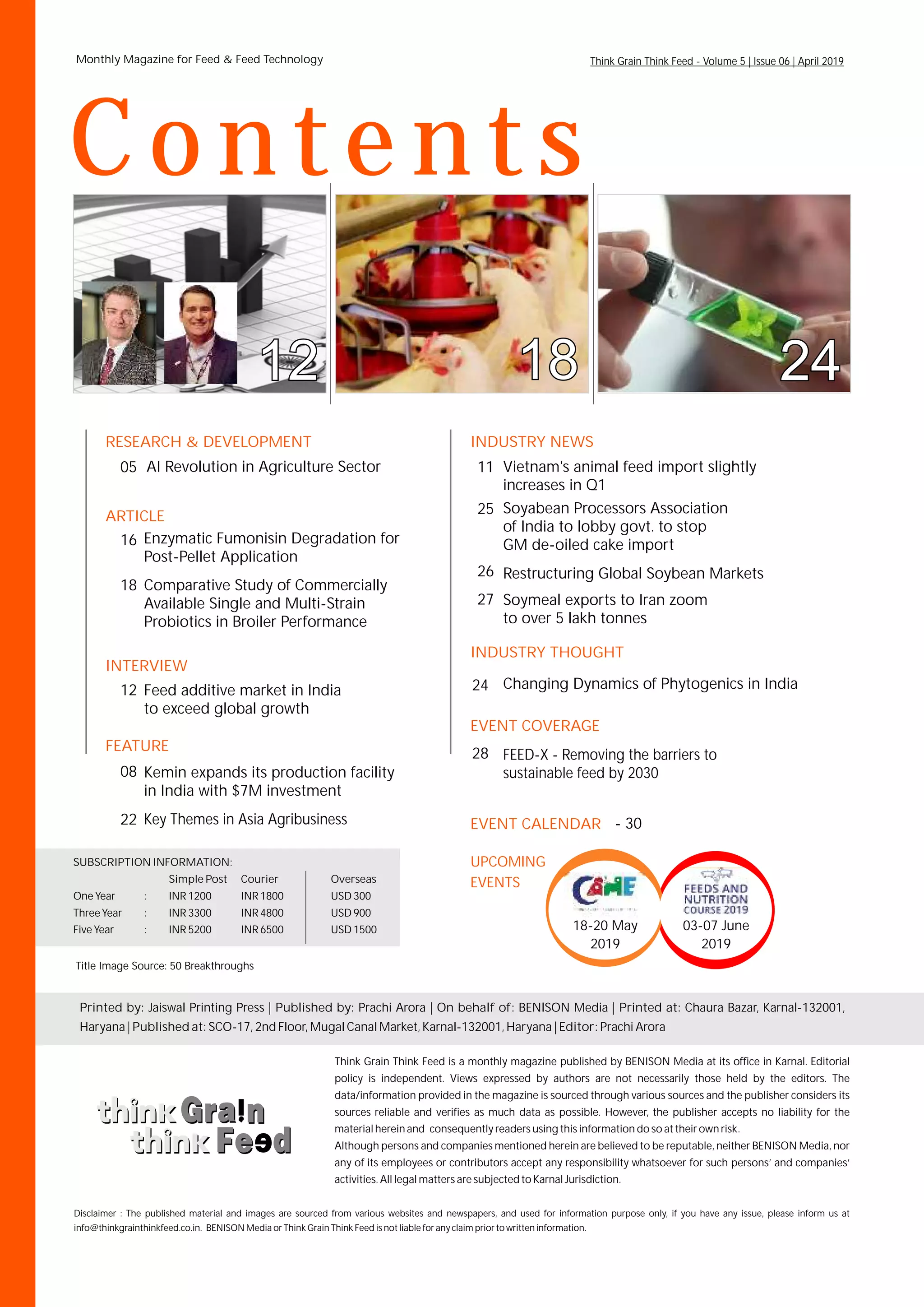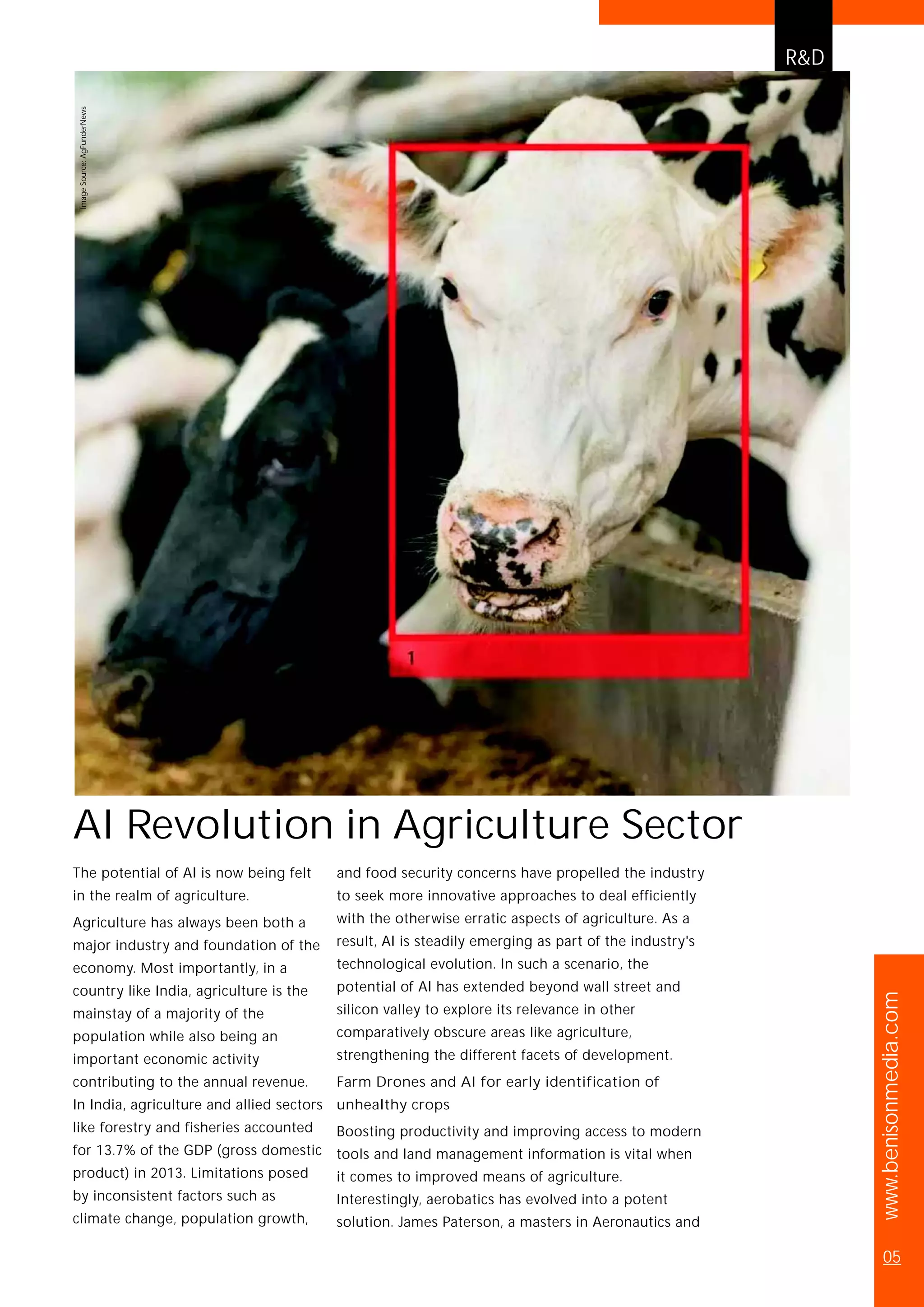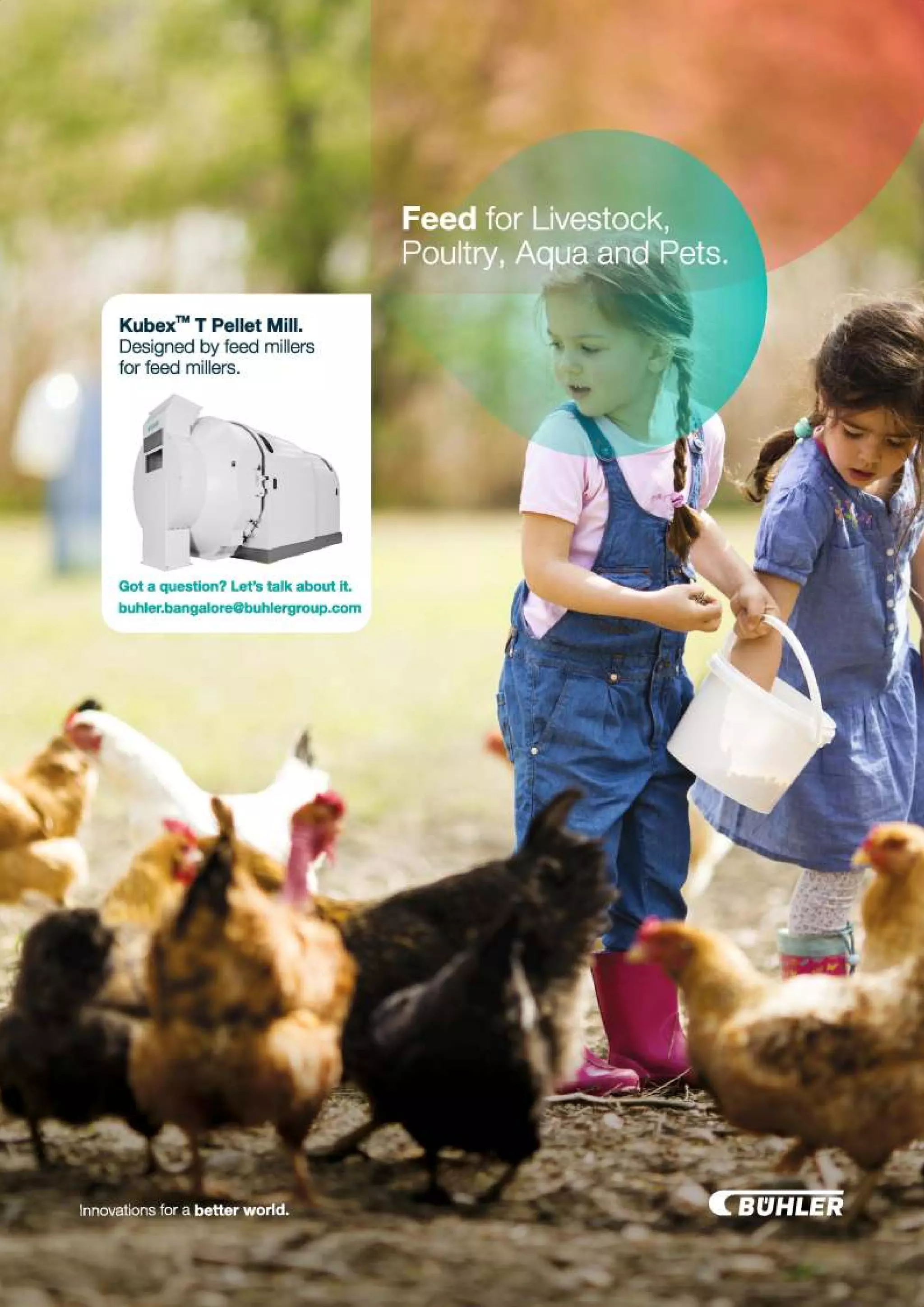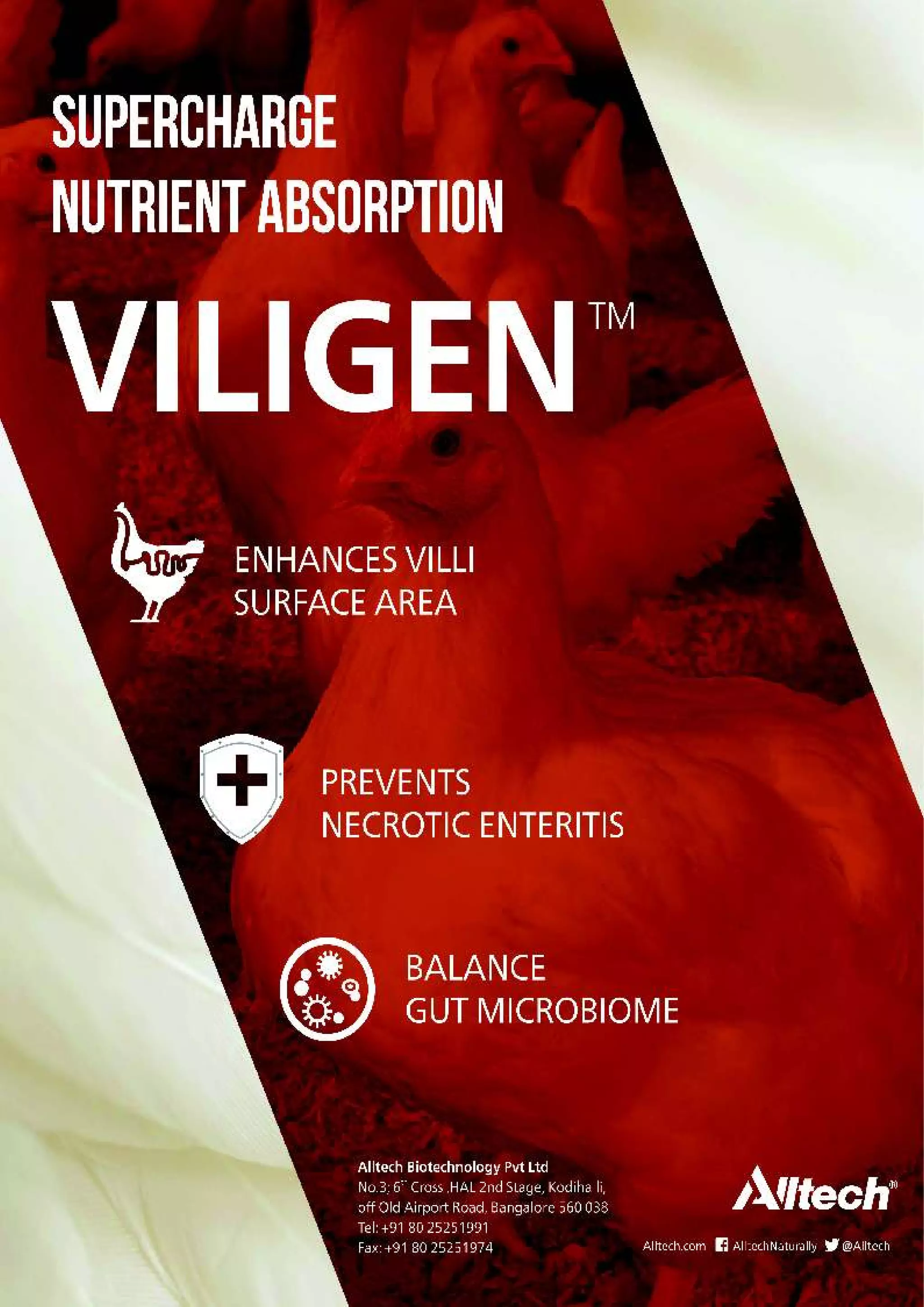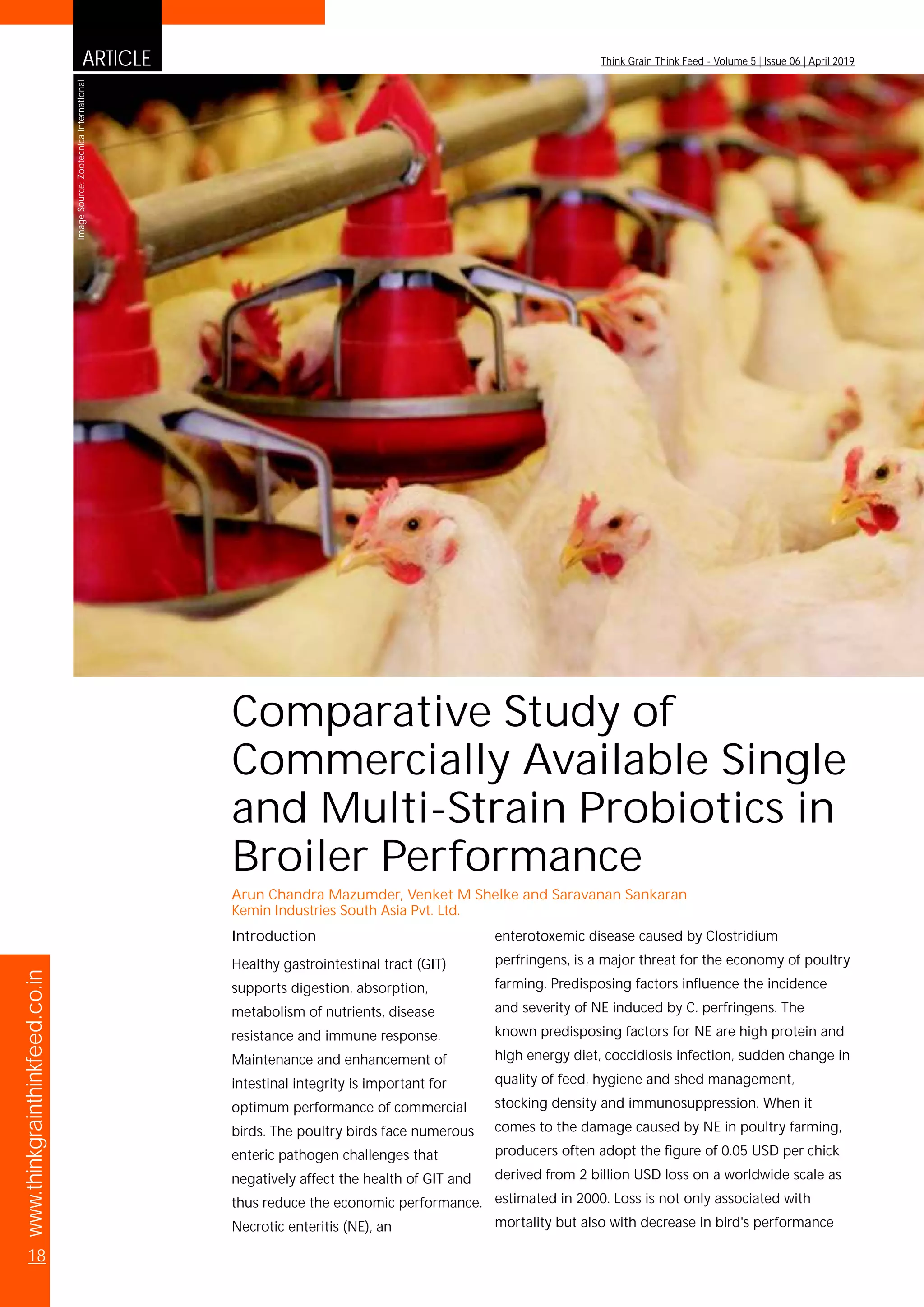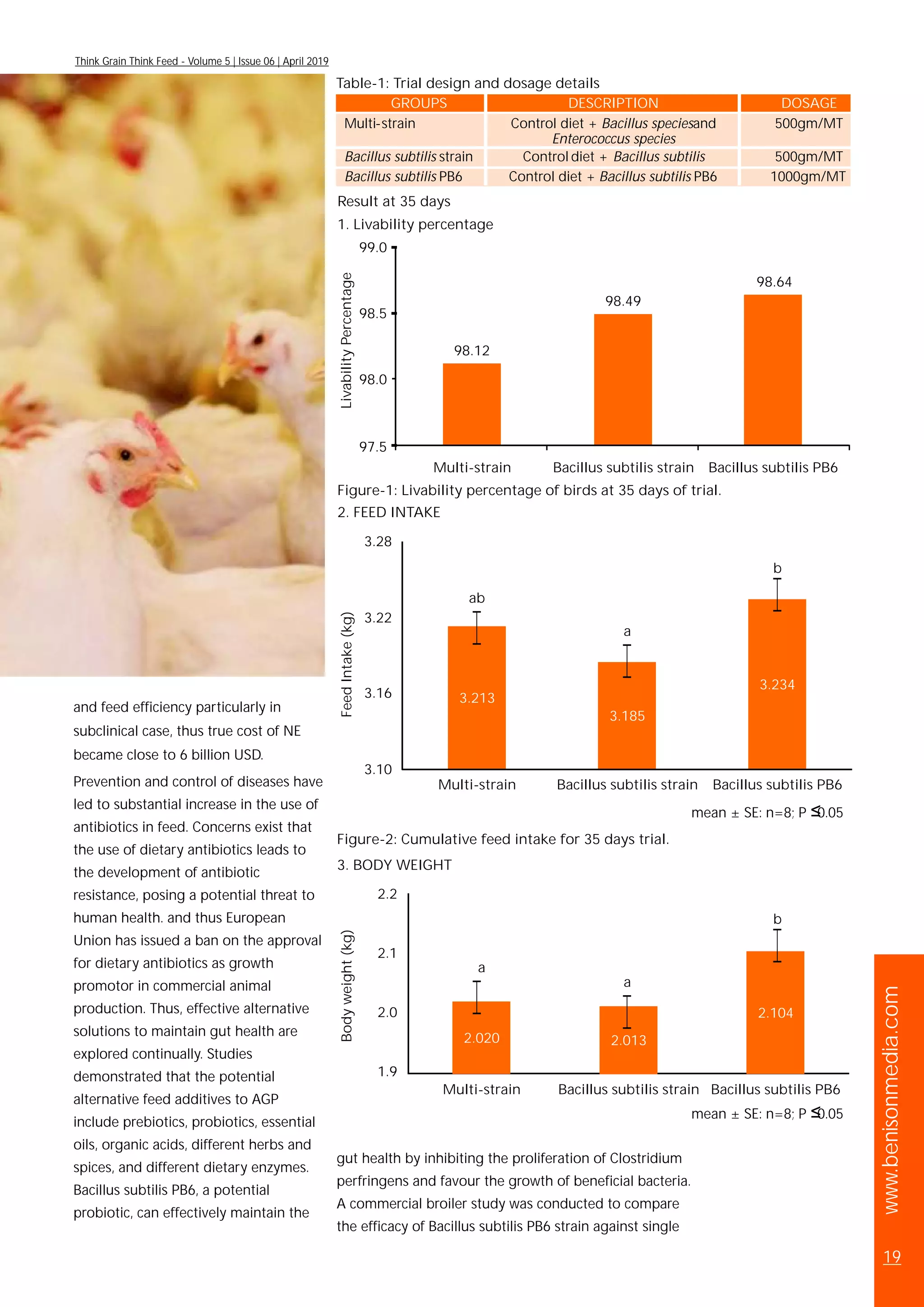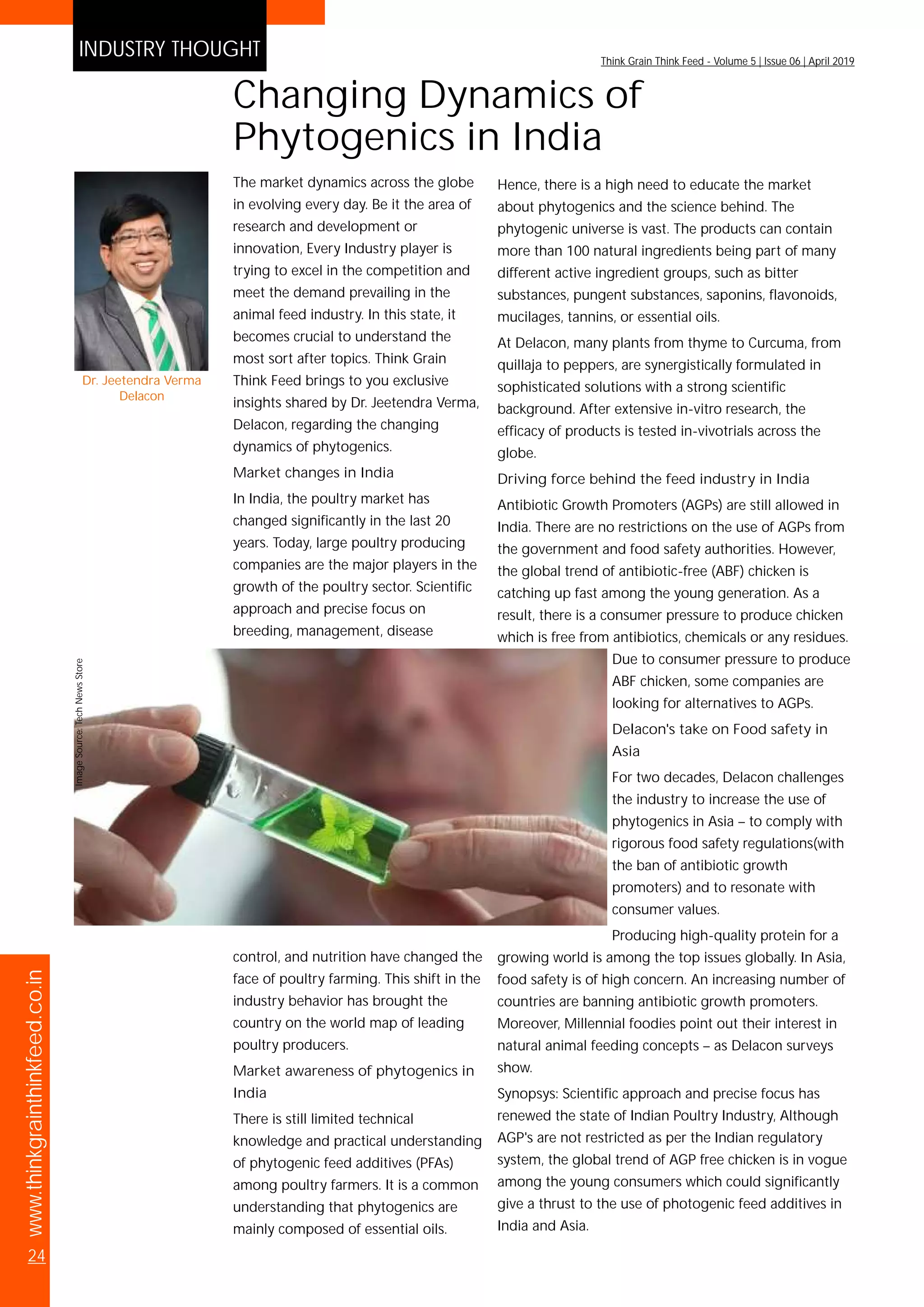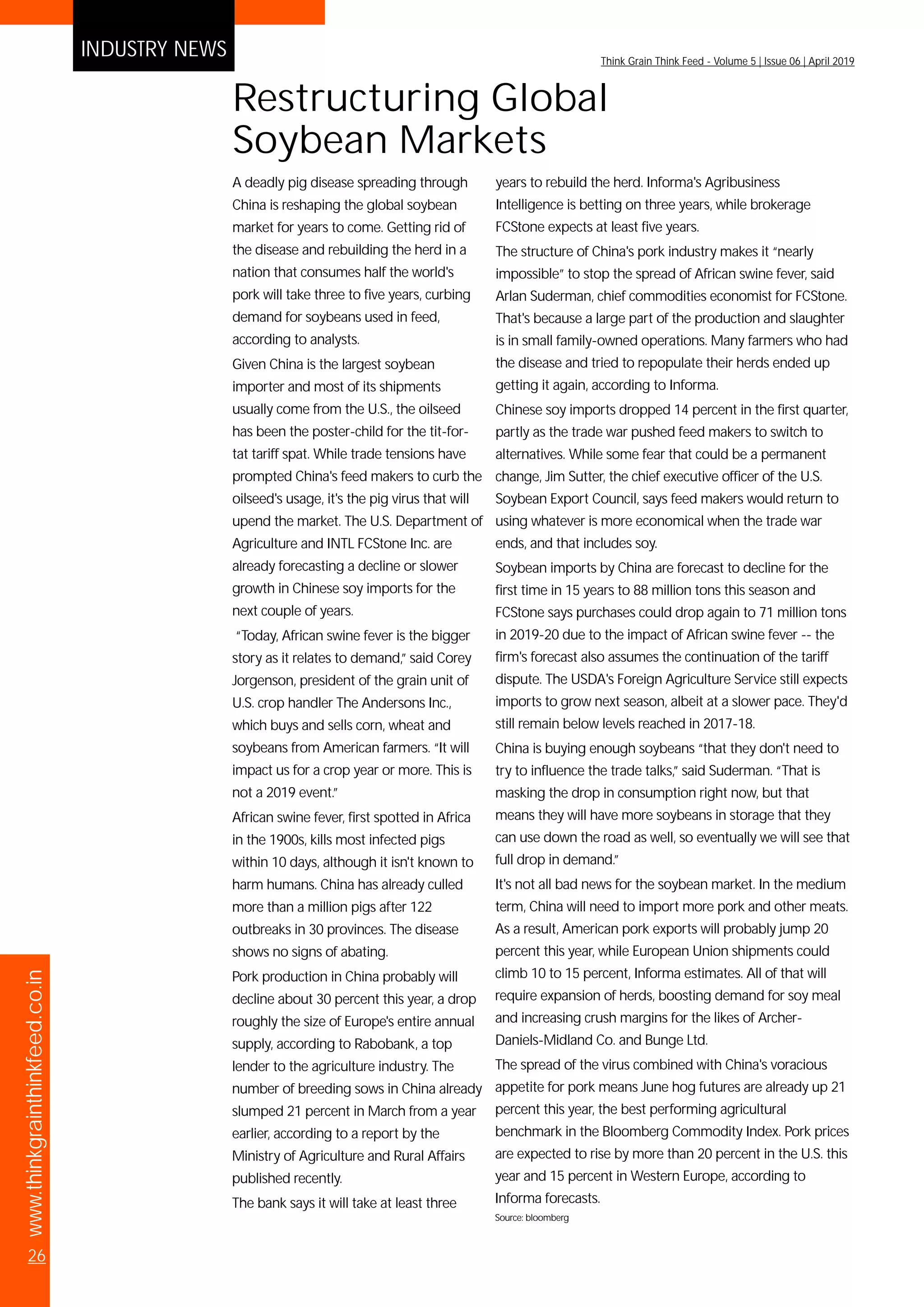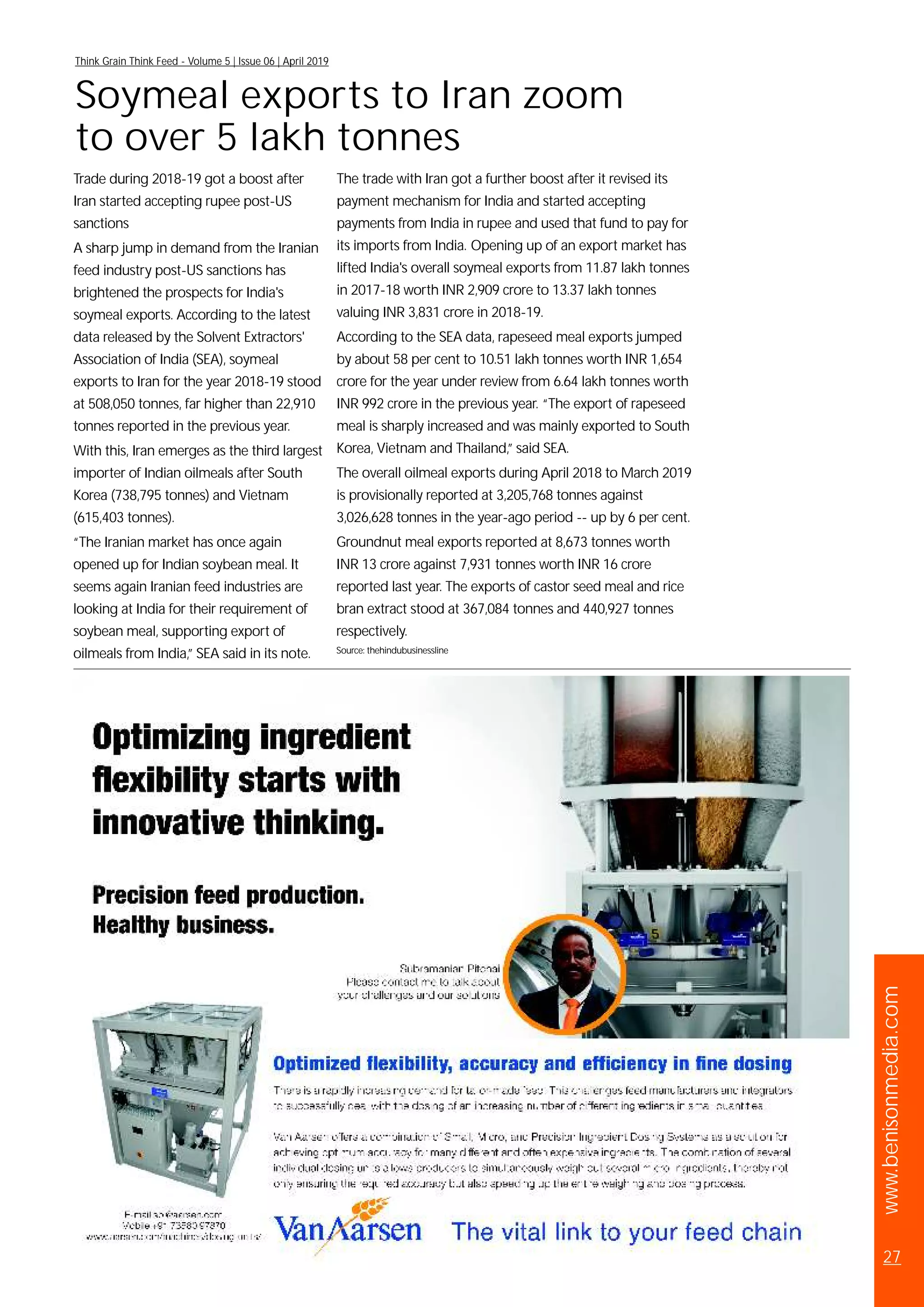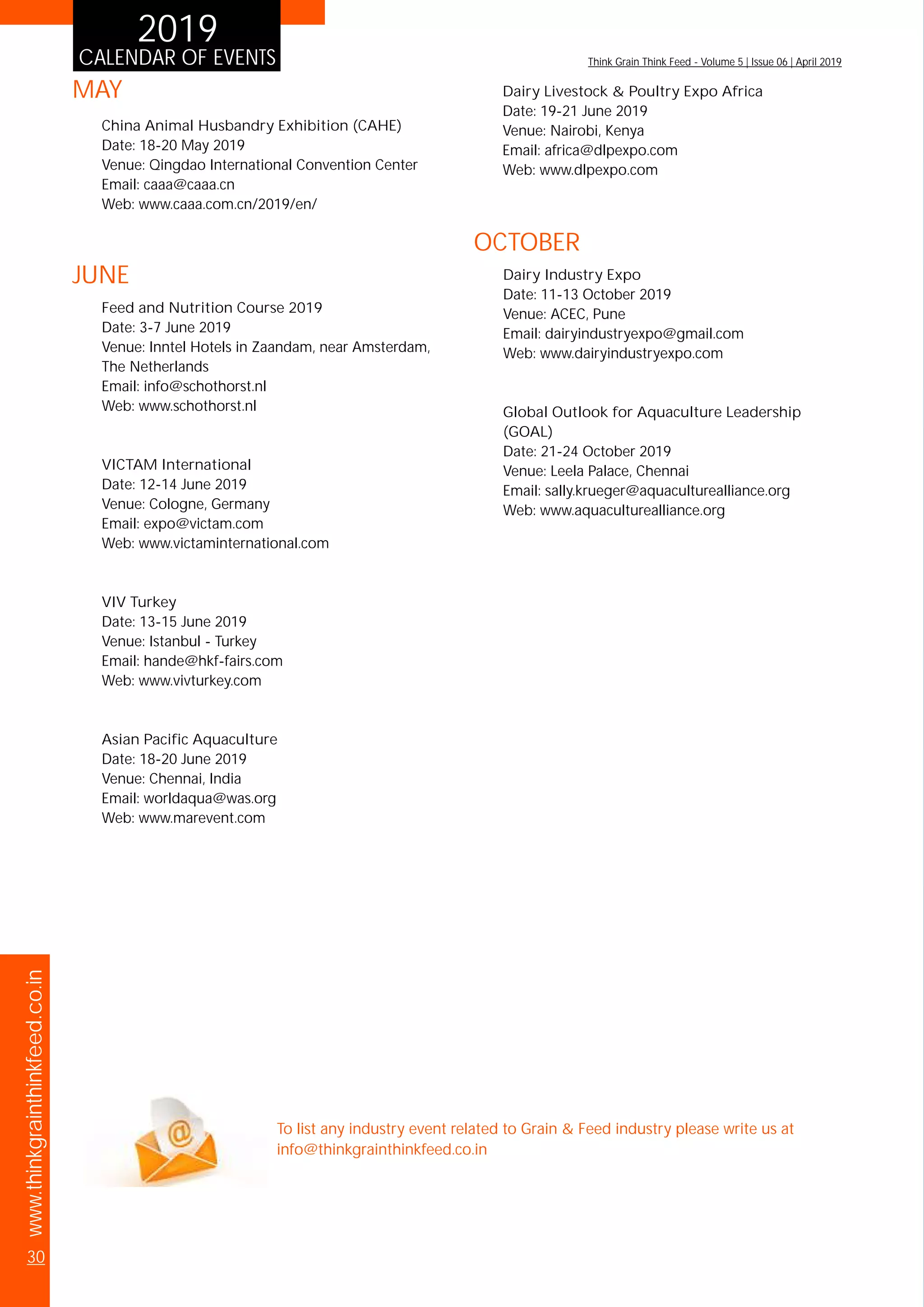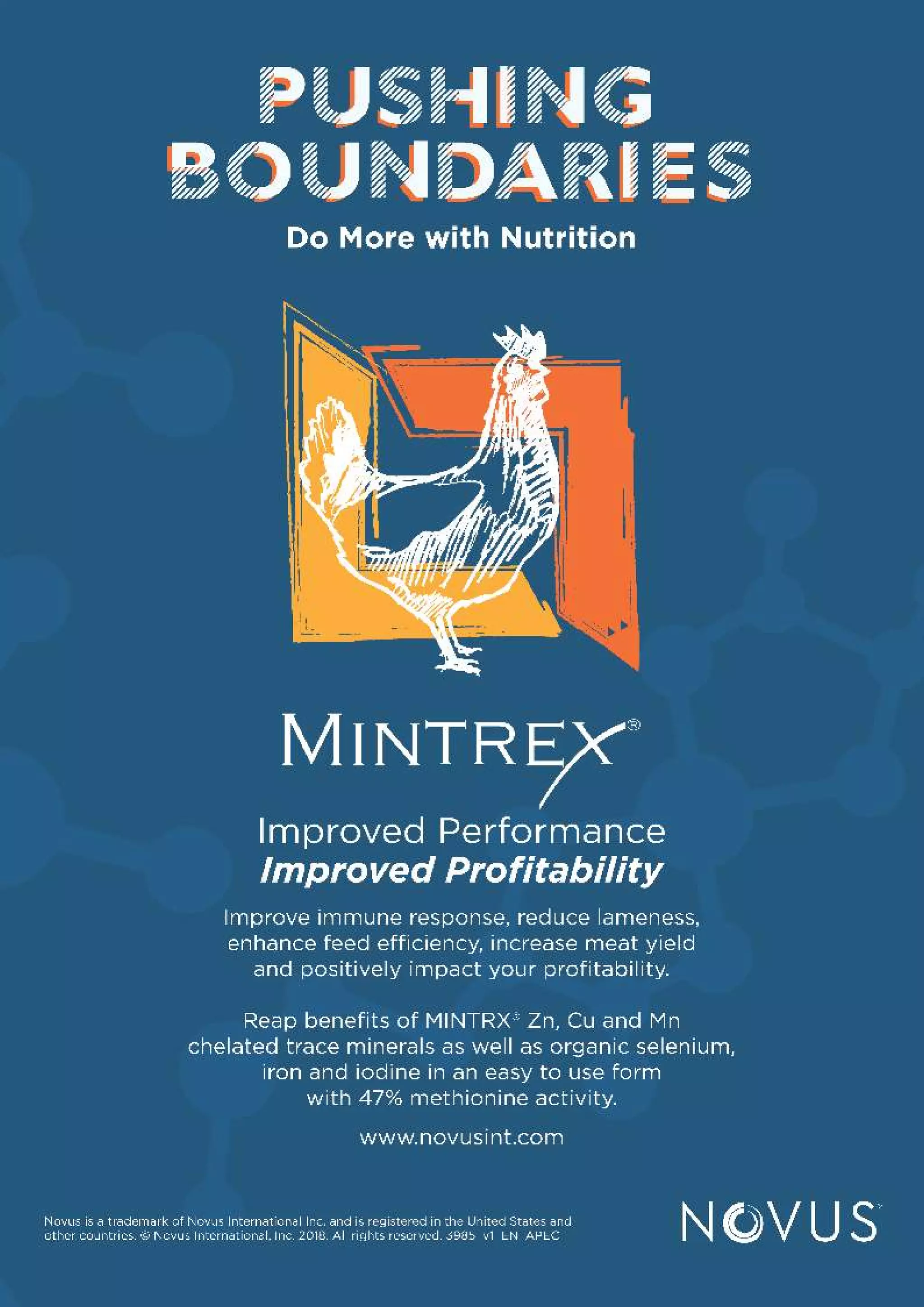This document discusses the pressing issue of feed and fodder shortages in India due to its large animal population and the rising demand for protein-rich foods. It highlights the potential for utilizing byproducts from the food processing industry, particularly fruits and vegetables, as unconventional feed ingredients to mitigate waste and reduce environmental impact. Additionally, it covers advancements in artificial intelligence and new technologies in agriculture, emphasizing their role in improving productivity and sustainability in farming practices.

